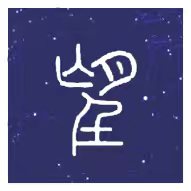Naturland标准与欧盟有机法规的一对一比较——种植
2. ARABLE FARMING 2.耕地 | |
Possible risk factors (dangerous waste, emission sources, and sources of contamination e. g. discharge of sewage · 可能的风险因素(危险废物、排放源和污染源,如污水排放) sludge) must be eliminated. 污泥)。 | No regulation · 无规定 |
A minimum percentage of legumes in the main crop (e. g. clover grass) in crop rotation is required a prerequisite which must be complied with before additional external organic fertilisers can be purchased. Legumes bind the nitrogen from the air and they are the most natural form of fertiliser. Growing legumes enriches the variety of · 轮作中主要作物(如三叶草)中豆类的最低百分比是一个先决条件,在购买额外的外部有机肥料之前,必须遵守该先决条件。豆类吸收空气中的氮,是最天然的肥料。种植豆类丰富了 crop rotation and reduces disease pressure. 作物轮作并降低疾病压力。 | No regulation · 无规定 |
When purchasing external inputs (e.g. farm- 购买外部投入时(如农场- produced fertiliser, fodder), these must be bought from Naturland farms or meet Naturland’s respective quality assurance requirements 生产的肥料、饲料),这些必须从Naturland农场购买或符合Naturland各自的质量保证要求 | No regulation · 无规定 |
Positive list of permissible cleaning and · 允许清洁和 disinfection agents for machines, equipment and plant used in plant production 用于工厂生产的机器、设备和工厂的消毒剂 | No regulation · 无规定 |
3. FERTILISERS 3.肥料 | |
Clearly defined requirements of organic fertilisation: 明确规定的有机施肥要求: The stronger limitation of the permissible animal stocking density (see 4.) and the limitation of the additional purchase · 允许动物放养密度的更强限制(见4.)和额外购买的限制 quantity of fertilizers (see below) results in a 肥料的数量(见下文)导致 | “Conventional fertilisation” possible with organic fertilisers: 有机肥料的“常规施肥”可能: No limitation on total fertiliser amount (internal and external) - only farm manure of animal origin is limited. 对肥料总量(内部和外部)没有限制——只有动物来源的农家肥受到限制。 Purchase of additional commercial 购买额外的商业 |
stronger limitation of the total amount of fertilisers which can be applied on the farm (from own animal husbandry and external fertilisers) 对农场可施用的肥料总量进行更严格的限制(来自自己的畜牧业和外部肥料) | fertiliser and thus significantly higher fertiliser input is possible. 肥料,从而显著提高肥料投入是可能的。 |
Restriction on the source and kind of organic fertiliser purchased: 对购买的有机肥料的来源和种类的限制: Only solid manure (except for poultry manure) from conventionally managed farms. Fermentation residue from biogas plants only if the organic farm's own fermentation material has been · 只有来自传统管理农场的固体肥料(家禽粪便除外)。只有当有机农场自己的发酵材料已经过 fermented in it and no liquid manure or poultry manure from conventional animal husbandry was used in the biogas plant; quantities limited. 在其中发酵,并且在沼气厂中不使用来自传统畜牧业的液体粪肥或家禽粪肥;数量有限。 Conventional poultry manure and conventional liquid manure are prohibited. 禁止使用传统的家禽粪便和传统的液体粪便。 Animal meal, blood and bone meal (even as fertilisers) prohibited 禁止动物餐、血液和骨粉(甚至作为肥料) | Almost free import of commercial fertilisers, even in the form of conventional liquid manure or poultry manure with no further requirements (only those from “industrial” sources are excluded). 商业肥料几乎免费进口,即使是传统的液体肥料或家禽粪便,也没有进一步的要求(只有来自“工业”来源的肥料除外)。 Animal meal, blood meal and bone meal are permitted and may be purchased as organic fertilisers (risk of BSE1) · 动物餐、血粉和骨粉是允许的,可以作为有机肥料购买(BSE1风险) |
Permissible amount of commercial 商业许可量 organic fertiliser or farm manure which may be purchased is restricted to 0.5 Dung Unit (DU)/hectare (except where required for certain specialised crops). 可购买的有机肥料或农家肥限制在0.5磅/公顷(某些特殊作物需要的除外)。 | No limit to amount of fertiliser which 肥料的数量没有限制 may be purchased. This means that a farm can rely solely on external fertiliser. 可以购买。这意味着农场可以完全依靠外部肥料。 |
6. VEGETABLE GROWING/SPECIAL CROPS/PERMANENT TROPICAL 6.蔬菜种植/特殊作物/永久性热带作物 PLANTATIONS 种植园 | |
Prohibition of CMS hybrids (cytoplasmic male sterility) from protoplast fusion -transfer of genetic material from one species to another in a manner which is not possible naturally · 禁止CMS杂交种(细胞质雄性不育)进行原生质体融合——以自然不可能的方式将遗传物质从一个物种转移到另一个物种 (with traditional cultivation techniques) (transition to genetic engineering processes) (使用传统的培养技术)(向基因工程过程过渡) | Use of CMS hybrids permissible 允许使用CMS杂交种 |
Prohibition of pyrethroids 拟除虫菊酯类的禁用 | Use of pyrethroids (= synthetic 拟除虫菊酯类的使用 insecticides) permitted 杀虫剂) |
Prohibition of chemically synthesised inputs · 禁止化学合成输入 | Approval of chemically synthesised inputs (art. 24) can be given in 化学合成输入的批准(第24条)可在 exceptional cases. 例外情况。 |
The amount of copper (Cu salts) permissible · 允许的铜(铜盐)量 is strictly limited: max 3 kg/hectare/year; max. 4 kg/hectare/year for hops. 严格限制:最高3公斤/公顷/年;啤酒花最高4公斤/公顷/年。 | Use of copper: considerably higher 铜的使用:相当高 single-year quantities permissible -and higher applications are also permitted as a 7-year average: up to 28 kg within 7 years. 允许的单年数量——7年平均值也允许更高的应用:7年内最多28公斤。 |
Open field vegetable cultivation: limitation · 露地蔬菜种植:局限性 of the total amount of fertiliser of 110 kg nitrogen/hectare and year 每公顷和一年110公斤氮的肥料总量 | No special consideration of total · 没有特别考虑总数 permissible amount of nitrogen fertilisers in open field vegetable cultivation 露地蔬菜栽培中氮肥的允许施用量 |
Mushroom cultivation: organic source materials, components and supplementary substances of the substratum must come from organic production · 蘑菇种植:基质的有机原料、成分和补充物质必须来自有机生产 | Substratum may contain up to 25% conventional substances (e. g. poultry manure). · 基质可能含有高达25%的常规物质(如家禽粪便)。 |
Viticulture/fruit cultivation: limitation of the total amount of fertiliser in a three-year rotation cycle (total of max. 150 kg of nitrogen/hectare) in viticulture and of 90 kg nitrogen/hectare and year in fruit cultivation · 葡萄栽培/水果栽培:葡萄栽培中三年轮作周期内的肥料总量限制(每公顷最多150公斤氮),水果栽培中每公顷和每年90公斤氮 | No special consideration of total permissible amount of nitrogen fertilisers in viticulture/fruit cultivation 在葡萄栽培/水果栽培中,没有特别考虑氮肥的允许总量 |
Restriction of use of peat to a maximum of 80% for seedlings (including potted herbs) and to a maximum of 50% in all other substrates (e. g. potted ornamental plants, tree nursery containers etc.), no extensive application as an input for enriching the soil 将泥炭的使用限制在幼苗(包括盆栽草本植物)的最高80%和所有其他基质(如盆栽观赏植物、苗圃容器等)的最高50%,没有广泛应用作为土壤肥沃的投入 | No restriction on the amount of peat; turf may be used 100% in substrates and applied extensively to enrich the soil. 泥炭的数量没有限制;草皮可以100%用作基质,并广泛应用以丰富土壤。 |
Coffee and cocoa must be cultivated in an · 咖啡和可可必须在 agroforestry system with shade trees and a large variety of plant species. 具有荫蔽树和多种植物的农林系统。 | No specific regulations for tropical permanent crops · 没有针对热带永久作物的具体规定 |
Bananas are to be cultivated in mixed crops or agroforestry systems. If this type of cultivation is not feasible, a biodiversity area around and in the crop of up to 10% is required for plantations areas from 5 ha onwards. · 香蕉将在混合作物或农林业系统中种植。如果这种类型的种植不可行,则从5公顷起的种植区需要周围的生物多样性区域和高达10%的作物。 | No specific regulations for tropical permanent crops · 没有针对热带永久作物的具体规定 |




